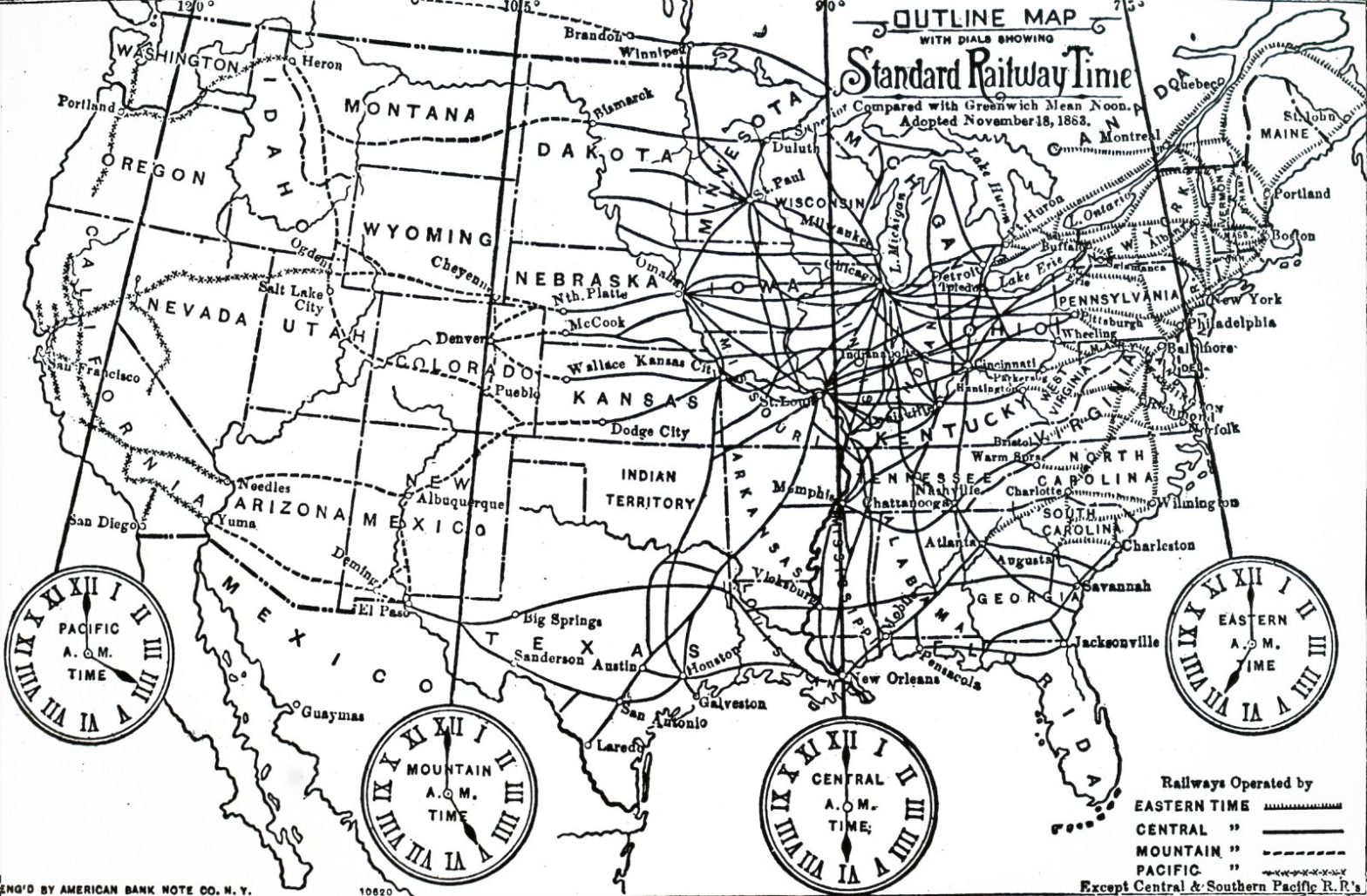On November 18, 1883, the American and Canadian railroads began following a British practice to use a “standard time” based on regional zones to report boarding and arrival times for their trains.
Prior to this date, most towns and cities kept local solar time, so that noon in each municipality was slightly different, depending on when the sun was on the north-south meridian. Railroads held to a standard time based on the city where its headquarters were located, or on the most important train station locations. This meant that a single junction served by several railroad companies would have individual clocks set to the standard time for a particular railroad company.
Obviously, this was a source of massive confusion for passengers and railway officials alike. Competing proposals for standardizing time was reported was resolved practically when the major railroad companies agreed on a zone system proposed by William F. Allen, editor of a travel guide book for people using trains to cross the US and Canada.
On the day the new time zones were adopted, the railway station in each city set its clocks to standard-time noon as it occurred. In many places, this meant a clock already registering past noon local time was set back, so that the station had two noons. The resulting standardization allowed for better train schedules, but also had ramifications for legal issues like birth dates, taxes, and when laws took effect.
It’s interesting to me that 160 years after the adoption of time zones, we still haven’t found a really good working solution for setting the clock.

